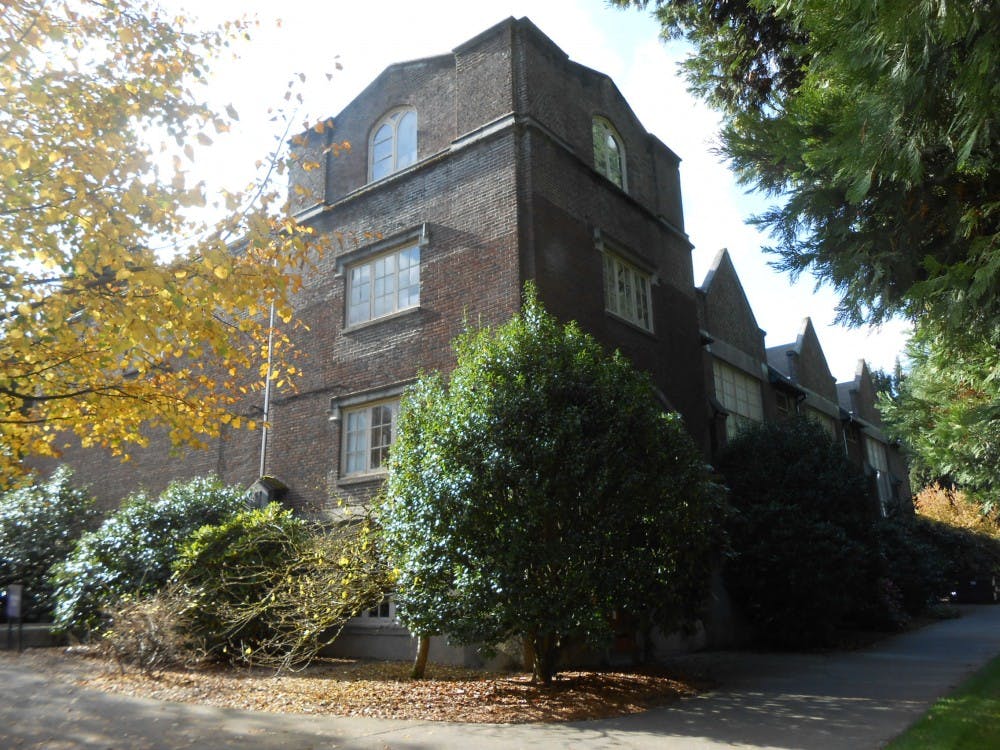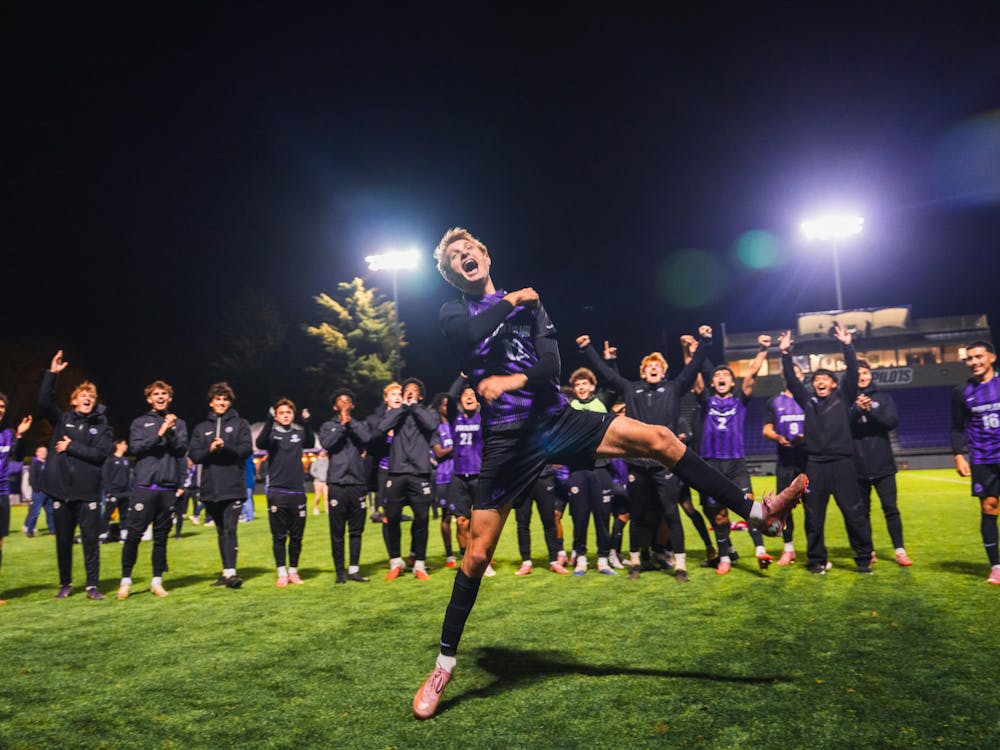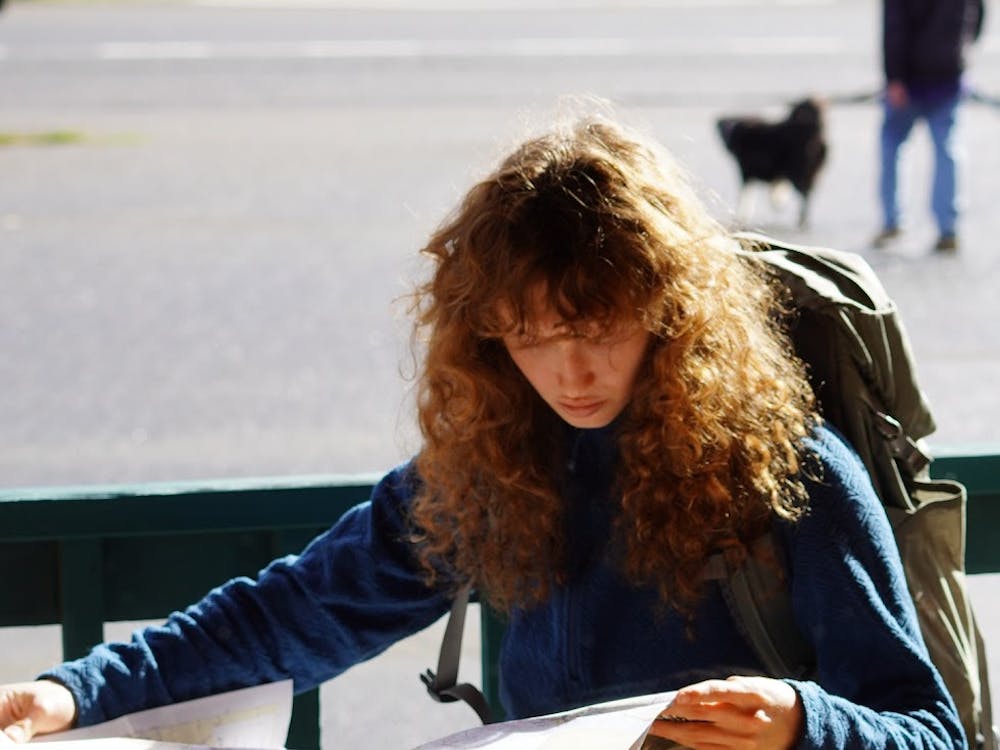Howard Hall’s creaking floors, moldy windows covered in cardboard and cracking ceiling look run-down, but the building also holds years of University of Portland history. Many juniors and seniors can recall running on one of the four treadmills, playing basketball in the old court where the floor would give every time you landed too hard, and making do with a tiny dance and free weights studio.
Students starting at UP in the fall and in coming years will never know what it was like to work out on campus in the pre-Beauchamp Center era, after Howard Hall is torn down over the summer.
The history of Howard Hall goes back to its beginning in 1927. The gymnasium was named after Archbishop Edward Howard of Portland, whose name is carved in stone above the building’s main entrance.
Over the years, Howard Hall was mostly used as a gymnasium and recreational infrastructure, but also served as an auditorium. With the Beauchamp Center now open, Howard Hall is now used as a home-base for ROTC on campus.
Howard Hall’s architecture was the main feature that students, alumni and professors loved the most. And although Howard Hall is “old and dilapidated”, these individuals would never forget the memories that they experienced in it.
Fun Facts
If you ever had a campus tour before coming to the University of Portland, you might have heard facts about Howard Hall from your tour guide, such it was a filming site for the TV show Grimm or when Michael Jordan came to film a Nike commercial.
A new cafeteria, where students could hang out and grab snacks in between classes, opened in 1935. The original Cove was located on the first floor of Howard Hall, in the area between the locker rooms and the swimming pool, allowing for an open space that accommodated about 50 people.
Patty Rubin, administrative assistant for Facilities Planning and Construction, wrote a piece about Howard Hall in Portland Magazine in Spring of 2006, which listed facts and odd stories associated with the building. Here are a few of the interesting ones:
- Among the concerts held in Howard: The Steve Miller Band and The Grass Roots.
- Among the speakers who have presented in it: John F. Kennedy, Milton Berle, Nelson Rockefeller and Julian Bond.
- Among the athletes practicing or filming commercials in it: NBA players Michael Jordan, Wilt Chamberlain, Magic Johnson and Kareem Abdul-Jabbar (who fell asleep on the stage).
- Memorable day: The Ash Wednesday earthquake of 2001. A 6.8 quake couldn’t drop the building. Some administrators were openly disappointed.
- Biggest explosion: The boiler, on a Saturday in 1969. Hot steam everywhere, which melted the varnish off the gym floor.
Howard Hall also survived many natural disasters according to the University Archives.
Fond Memories
Psychology professor Deana Julka recalled her “especially memorable experience” in Howard Hall. Julka began working at the University of Portland in 1997. She would work out in the gym every day, even when she was pregnant.
One day in 2003, she was exercising on the stairmaster machine when - suddenly - her water broke. For the first couple years after her daughter was born, Julka would still bring her in a stroller while she worked out.
“I had very fond memories of Howard Hall,” Julka said. “I even was there when September 11th happened, listening to the radio — so a big moment in history.”
Sports and Entertainment
In the 1930s, a variety of dances and events were held in Howard Hall, including homecoming dances, concerts from artists like Grassroots and Taj Mahal and orchestral performances. According to the 1935 LOG Yearbook, “some of the priests were known to perform on the ukulele on various occasions.” Plays, dances and other forms of entertainment were customary at what was then Columbia University (UP’s former name).
Howard Hall also had recreational programs and services open to students. Fencing, boxing, weightlifting, swimming and jumping on trampolines became the “amateur athletics” part of the program.
Although Howard Hall will be taken down this summer, the stories associated with the historic and unforgettable building will be remembered by students, faculty, staff, alumni and anyone who has connected with it throughout its 90-year history.








